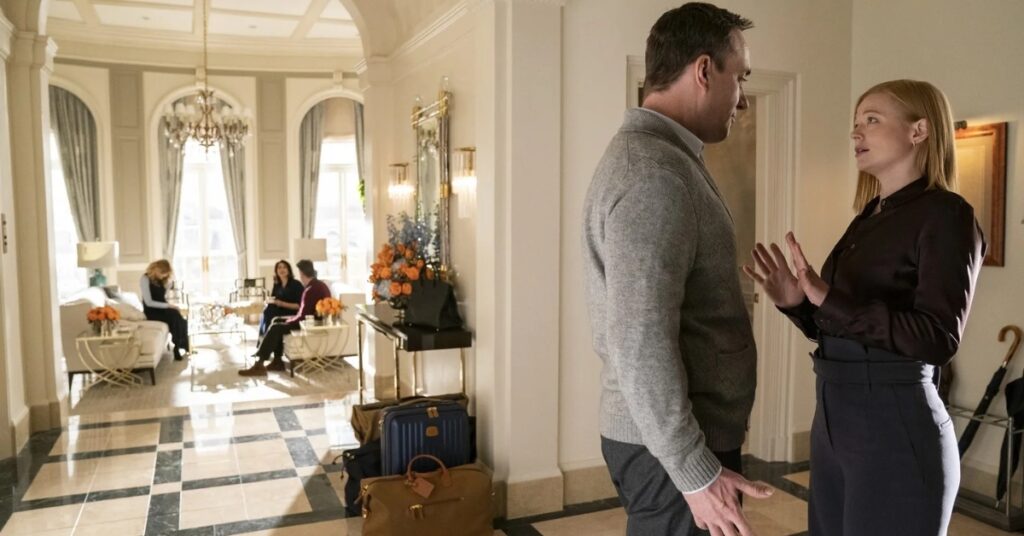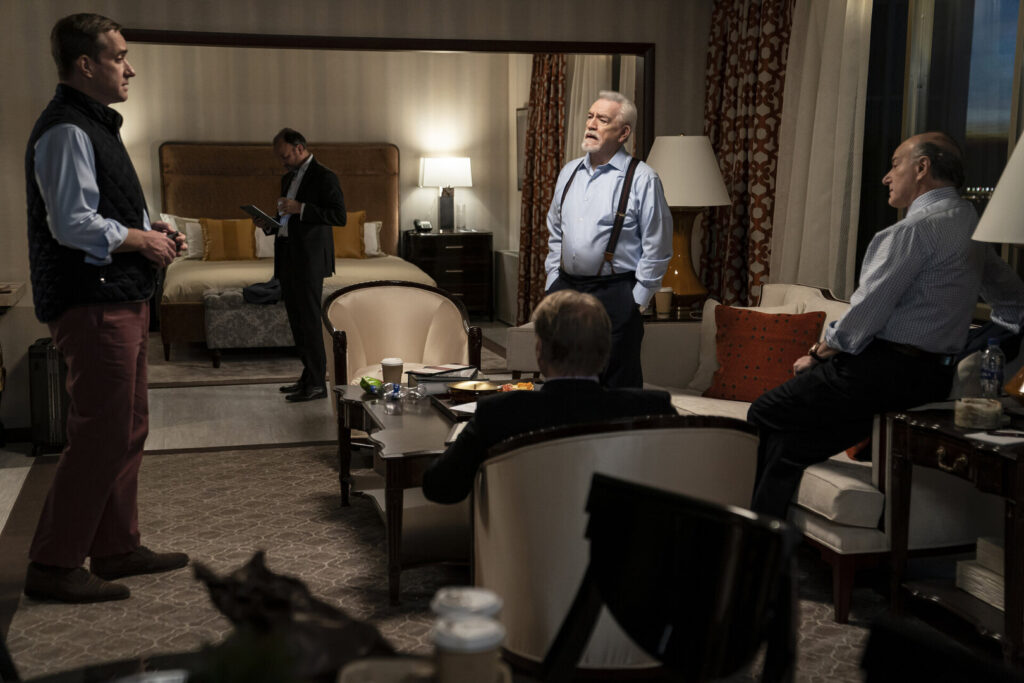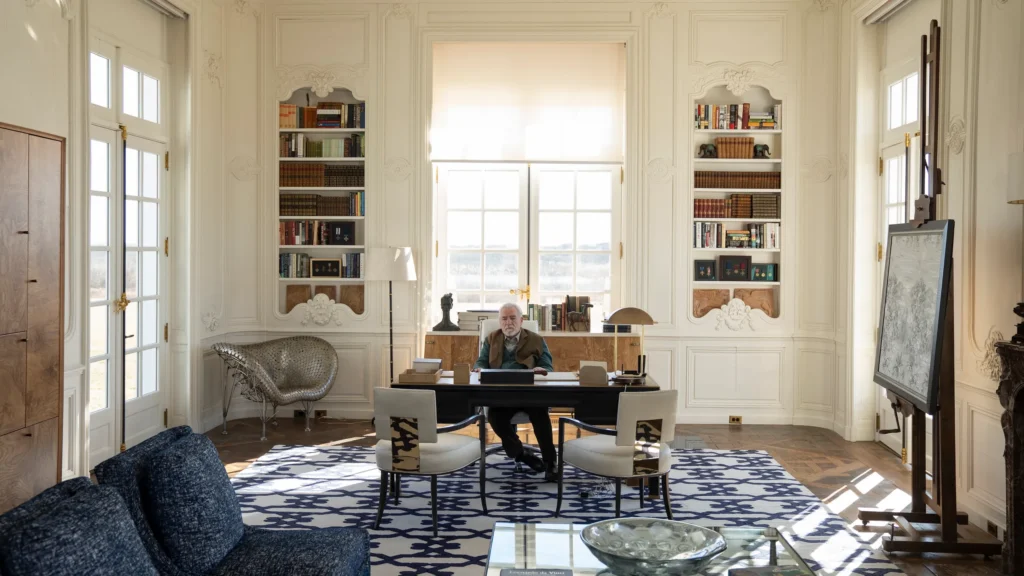Television dramas have long been a mirror to societal power dynamics, but in recent years, shows like ‘Succession’, ‘Billions’, and ‘House of Cards’ have taken that reflection one step further—into the interiors themselves. These shows don't just tell stories of billionaires and power players—they stage those stories within meticulously crafted environments that visually embody control, legacy, ambition, and wealth. The interiors in these series aren’t just backdrops. They are characters in their own right, carefully styled to evoke psychological dominance, generational wealth, and icy restraint. So, what can we learn from these "power interiors"? Let’s explore the defining elements of this emerging design language—and how you can borrow from it for your own space. 1. Minimalism Meets Monumentality In Succession, the Roy family’s penthouses, boardrooms, and private estates often feature minimalist design—clean lines, open spaces, and muted tones—but with a monumental twist. Think: towering ceilings, sprawling windows, and statement sculptures. 2. Cold Neutrals and Dominant Materials The color palettes in shows like Succession and Billions rarely stray from cold, controlled hues—stone grays, steel blues, and rich charcoals. These are often paired with luxury materials like glass, polished marble, leather, and dark wood. 3. Corporate Meets Residential Much of the Roy family’s world is designed to blur the line between home and boardroom. Whether it’s Kendall’s sterile Manhattan loft or Logan’s fortress-like retreat, the furniture often mimics executive office aesthetics: ergonomic, dominant, and deliberate. 4. Art as a Status Symbol In these shows, walls are never empty. But instead of cozy …
What ‘Succession’ and Similar TV Shows Reveal About Power Interiors

Television dramas have long been a mirror to societal power dynamics, but in recent years, shows like ‘Succession’, ‘Billions’, and ‘House of Cards’ have taken that reflection one step further—into the interiors themselves. These shows don’t just tell stories of billionaires and power players—they stage those stories within meticulously crafted environments that visually embody control, legacy, ambition, and wealth.
The interiors in these series aren’t just backdrops. They are characters in their own right, carefully styled to evoke psychological dominance, generational wealth, and icy restraint. So, what can we learn from these “power interiors”?
Let’s explore the defining elements of this emerging design language—and how you can borrow from it for your own space.

1. Minimalism Meets Monumentality
In Succession, the Roy family’s penthouses, boardrooms, and private estates often feature minimalist design—clean lines, open spaces, and muted tones—but with a monumental twist. Think: towering ceilings, sprawling windows, and statement sculptures.
- Design Insight: Power interiors don’t shout; they whisper. Restraint in design signals confidence.
- Inspiration Tip: Choose large-scale art, sculptural lighting, and oversized furniture pieces to make quiet, bold statements.
2. Cold Neutrals and Dominant Materials
The color palettes in shows like Succession and Billions rarely stray from cold, controlled hues—stone grays, steel blues, and rich charcoals. These are often paired with luxury materials like glass, polished marble, leather, and dark wood.
- Design Insight: Cooler palettes psychologically distance characters from warmth and emotion—projecting control.
- Inspiration Tip: Mix matte and reflective surfaces, such as velvet sofas against chrome tables, to create textural tension.
3. Corporate Meets Residential

Much of the Roy family’s world is designed to blur the line between home and boardroom. Whether it’s Kendall’s sterile Manhattan loft or Logan’s fortress-like retreat, the furniture often mimics executive office aesthetics: ergonomic, dominant, and deliberate.
- Design Insight: The home becomes a space to conduct business—and assert dominance.
- Inspiration Tip: Invest in structured seating, bold desks, and statement conference-style dining tables.
4. Art as a Status Symbol
In these shows, walls are never empty. But instead of cozy family portraits, you’ll find modern art, abstract sculptures, or politically charged pieces—serving as markers of taste and affluence.
- Design Insight: Art doesn’t just decorate, it communicates. Often silently.
- Inspiration Tip: Curate art that reflects your personal ideology, ambition, or cultural capital. Go large and bold.
5. Lighting as Power Play
From dimly lit boardrooms to dramatically spotlit hallways, lighting in these interiors is used with precision. It’s often moody, directional, and rarely designed for comfort—more for drama.
- Design Insight: Strategic lighting focuses attention, creates mood, and asserts spatial control.
- Inspiration Tip: Use sconces, concealed LED strips, or pendant lights to highlight zones of power (like desks or fireplaces).
6. Silence Over Clutter
Power interiors thrive on emptiness. Clutter suggests vulnerability or instability—two things power players never want to project. Instead, surfaces are pristine, walls uncluttered, and every item is intentional.
- Design Insight: The more powerful the space, the fewer distractions it allows.
- Inspiration Tip: Practice ruthless curation. Replace small décor with larger, impactful pieces and avoid unnecessary ornamentation.
7. Spatial Psychology: Height, Distance, and Framing
Watch closely in Succession—characters are often placed in frames that reflect hierarchy. The power player stands taller, occupies more space, or is framed centrally. Interiors are designed to emphasize asymmetry and imbalance, often subconsciously placing others at a disadvantage.
- Design Insight: Spatial relationships reinforce social ones.
- Inspiration Tip: Play with elevated platforms, oversized doors, and spatial division to create implied status zones.
8. Legacy Objects: Heritage Without Sentimentality
Power interiors often feature old-world heirlooms, vintage furniture, or antique pieces—but rarely with warmth or nostalgia. These items signal generational wealth and long-standing influence.
- Design Insight: It’s less about emotion and more about lineage and legacy.
- Inspiration Tip: Introduce vintage desks, clocks, or historic books—but display them with cool detachment.
Final Thoughts: Designing Your Own Power Interior
While most of us don’t live in Manhattan penthouses or Swedish castles, we can still learn from the intentionality and design philosophy behind power interiors. Whether you’re redesigning a home office or your entire apartment, think about the psychology of space: how you want to feel, and how you want others to feel when they enter.
Because in the end, the spaces we live in aren’t just about style—they’re about storytelling, identity, and influence.


